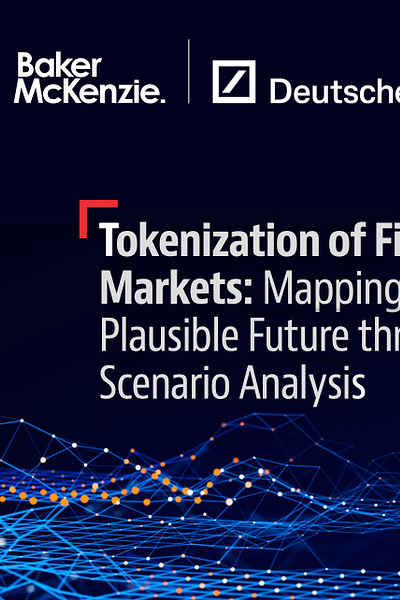The Future Of Tokenization: Global Takeover Or Silent Trap?
Interest in tokenization does not guarantee success; deep secondary markets do.
This is my daily post. I write daily but send my newsletter to your email only on Sundays. Go HERE to see my past newsletters.
HAND CURATED FOR YOU
Baker McKenzie and Deutsche Bank released a comprehensive report on tokenization, examining two potential outcomes: a “Global Takeover” and a “Silent Trap.”
Finally, a paper on tokenization that goes beyond the incessant drone of proclamations about the trillion-dollar potential market value!
The authors rightly declare that “tokenization’s future trajectory is malleable.”
It is, and while regular readers know that I love tokenization, its future is far from certain and depends on the development of deep and liquid secondary markets for tokenized assets.
The creation of these markets extends far beyond the beauty of the technology, plunging us into the desires of real-world clients and industry players who will ultimately be the arbiters of tokenization’s success or failure.
In the optimistic scenario, “The Great Tokenization Takeover,” the ease of use and broad adoption help tokenized markets reach a scale, liquidity, and resilience that make them the cornerstone of global finance.
In the pessimistic scenario, “The Silent Tokenization Trap,” the secondary market for tokenized assets cannot overcome the real barriers that thwart adoption of high technological sophistication, siloed ecosystems, and suitability for retail investors.
Will tokenization remain with banks or non-banks?
If banks remain restricted, non-banks and fintechs will likely continue driving tokenized finance as a parallel system, in as much as regulators allow this market to thrive.
Banks have no choice but to wait for regulations to evolve, and only then will they embed tokenization within traditional finance.
Which scenario will win? My bet is still on global takeover!
👉Tokenization’s Four Key Drivers (highlights)
🔹 Demand driver for digital assets: a generational and geopolitical shift
The great wealth transfer: Millennials & GenZ driving demand as a massive USD 84 trillion wealth transfer from baby boomers to millennials and Gen X by 2045 is underway.
Geopolitical and national interests in crypto and digital reserves: Nations are increasingly acquiring digital assets, not just as investments, but as strategic financial reserves.
🔹 Supply Side Driver: What Will Be Tokenized, and Who Will Issue It?
Institutional and sovereign issuances: new players like VCs or private funds?
Expanding the universe of tokenized products: new products like crypto ETFs?
Crypto as a differentiated asset class: anti-inflationary or a global sentiment tracker?
24/7 market access and direct cross-border distribution: an always on financial system.
🔹 Market Structure & Adoption Driver: Building Liquidity & Ecosystem Depth
Market fragmentation Risks: Importance of Interoperability The mix of inherently non-interoperable public and private chains reduces market efficiency.
🔥Market risks being stuck in the primary market stage: High interest in tokenization does not guarantee that it can successfully transit the primary issuance phase into deep secondary markets.🔥
Is there enough demand? Another key consideration is whether there is enough demand to justify building this infrastructure, including hiring experts and implementing new processes.
🔹 Regulatory Driver: Catalyst or Barrier?
Unlocking demand: will regulatory certainty unlock institutional adoption?
Unlocking Supply: Will Harmonized Frameworks Drive Issuer Confidence?
The Path Forward: Avoiding The Trap and Accelerating The Tokenization Takeover






